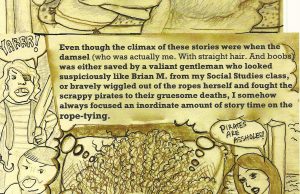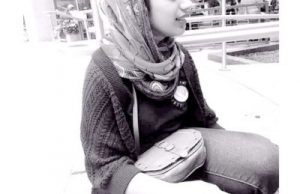On a Blues Woman’s Birthday
Today is singer Bessie Smith’s 117th birthday. While the particular milestone is not the most significant, the woman it relates to is. “The Empress of the Blues” (1894-1937) wrote and performed songs, and lived a life that challenged the dominant image of black femininity in the early twentieth century; an image that largely relegated African American women to the margins of social and political life. When the majority of these women were employed in some form of domestic servitude, their usually insufficient, sometimes non-existent, pay and abusive conditions often came with an expectation of invisibility and obedience (an expectation that, as Tera Hunter argues, many relentlessly contested). If whites wanted to see black women, they usually sought a spectacle that debased, stereotyped or fetishized them. This was a time in which Josephine Baker—an anti-racist and feminist activist in her own right—achieved fame by dancing topless in a banana skirt, and could not escape her audience’s expectations of sexualized primitivism even by relocating to Europe. (It is worth noting, as Bennetta Jules-Rosette does, that Baker quickly appropriated and reinterpreted the famous costume for her own ends). But Bessie Smith did not concede to such social expectations.
Until the Depression and the advent of talking pictures eventually killed the Vaudeville circuit that made the Empress’ name, she had a wildly successful career. Her 1923 recording debut with Columbia, “Downhearted Blues” and “Gulf Coast Blues,” sold over 780,000 copies. She was soon earning over $2,000 a week, making her the most successful contemporary recording artist. These are in themselves staggering achievements for a black woman at the time, but some of her lyrics illustrate not only the example she set then, but also her importance today. And in the blues tradition of storytelling, resistance and survival, three incidents from her life further remind us of her legacy.
Angela Davis, in her definitive work on Smith (as well as fellow blues women Gertrude “Ma” Rainey and Billie Holiday), Blues Legacies and Black Feminism, points to her work as a lyricist in establishing communities of resistance with her female listeners. In songs like “Safety Mama,” she told women “how to treat a no-good man,” by maintaining financial independence, and exhorting equal gender roles: “I made him stay at home, help me wash and iron/ The neighbors knows he done lost his mind.” In “Young Woman’s Blues” she argued the case for sexual and social freedom outside of marriage: “No time to marry, no time to settle down/ I’m a young woman and I ain’t done runnin’ round/…I’m as good as any woman in your town…/I’m gon’ drink good moonshine and run these browns down.” In “Preachin’ the Blues,” she defended a woman’s (and man’s) right to sexual autonomy, refusing to moralize about the behavior of others: “I ain’t here to try and save your soul/ Just want to teach you how to save your good jelly roll.” In “Foolish Man Blues,” allusions to “a mannish acting woman” openly engaged issues of lesbianism and bisexuality. Although they might seem archaic now in their characterizations, the fact that these lyrics candidly addressed these issues at all made them groundbreaking. According to Chris Albertson’s biography, Bessie, Smith “knew what she was singing about”; her own sexual orientation was not bounded by the cultural insistence on the heteronormative (125).
What is most striking about Smith’s unwillingness to concede to dominant social demands of heterosexuality and submissiveness, is that she gave the blues mass appeal despite, or perhaps because, of her defiance. Debate rages over whether a current pop musician like Lady Gaga can be considered a feminist. On the one hand, she proclaims herself one, does not feel the need to conform to conventional ideas of beauty, and is lauded for her pro-gender and sexual equality stance, particularly in regard to “Don’t Ask, Don’t Tell” (made all the more influential by her status as the most followed person—not just woman—on twitter. At over nine million, she has the potential to directly communicate her views to a bigger audience than Smith ever could). On the other hand, Gaga has disavowed her own feminism, equated such an ideology with hating men, and garnered criticism for posing naked for a men’s magazine. While some defend this latter act as a deliberate subversion of traditional forms of sexualization, others make the case that her own brand of feminism is still developing, or that her deliberate ambiguity may be an act of feminism in itself. But if Gaga’s true feminist credentials are defined by this decided equivocality, it is an option that the present, and a feminist tradition that has created it, affords. Those who look to Gaga as a feminist icon—a position that can certainly be argued—should realize that her ability to assert this individuality in such a public space, to confront standards of sexual behavior, to be taken seriously as a political actor, and to be a successful business woman in the popular music field owes much to the pioneering work of Smith and other blues women. They truly created a place for sexually confident, expressive, unique female artists to make their music and articulate their opinions. There was nothing uncertain about Smith’s desire or ability to transcend gender oppression, but that is because to make her point, to build a community around confrontation of the social orthodoxy, and to reach a significant audience, she had to be direct—even when the penalties for being so could be extreme.
If we need any evidence of what confronting gender expectations of the time could mean, we can look to one of the most famous incidents of Smith’s life. After a sell-out performance in Chattanooga, Tennessee in February 1935, she attended an after-party at a family-friend’s house with four of her female dancers. As she ate a meal of pigs’ feet and moonshine, an unfamiliar man entered the kitchen from the makeshift dance floor and attempted to force one of the dancers to accompany him. According to Albertson’s interview with one of the dancers (and the singer’s niece), Ruby Walker, Smith’s reaction was typically confident and combative:
“We don’t want to be bothered,” she said, “so you just get back in there and let them alone.”
“Who the hell are you? [he replied]”
Bessie’s calm was deceptive. “Did that fucker say something to me?” she asked softly. Before anyone could respond to her question, she had jumped the intruder and hit him on the head with her two clenched fists. As stunned by surprise as by the blow itself, he fell to the floor.
Not waiting for a reaction, Bessie turned back to the table, sat down, and resumed eating…as her victim got back on his feet and stumbled discreetly out of the kitchen. (85-86)
When leaving the house three hours later, the man, without warning, stabbed Smith in the side and fled. She “went in immediate pursuit, chasing him for three blocks before sinking to her knees in anguish.” Although doctors advised her to remain in hospital, she checked herself out hours later: “The stabbing took place at four o’clock in the morning; at two the following afternoon, Bessie was on stage at the Liberty Theatre for her scheduled matinee.” (86) At a time when most men felt they could command unquestioned obedience from women, and many felt they could answer a feminine defiance with violent abuse, Bessie Smith proved them wrong. She was never one to be silenced, or to let other women be, by words or by weapons.
She exhibited a similarly aggressive attitude to those who persecuted her on grounds of race. Two years later, at a performance in Concord, North Carolina, Ku Klux Klan members began to collapse the tent under which she was performing. When the male members of her band refused to confront them, Smith, in Albertson’s words, “ran towards the intruders, stopped within a few feet of them, placed one hand on her hip, and shook a clenched fist at the Klansmen. ‘What the fuck you think you’re doin’? … I’ll get the whole damn tent out here if I have to. You just pick up them sheets and run!’” (132-3). They did precisely that to the sound of continued threats. If the Klan specialized in policing the color line, and female sexuality, they found in Bessie Smith someone who would not be bullied.
The final episode in Smith’s life to which we turn is, paradoxically, her death. On September 25, 1937, the car she was in with her third husband, Richard Morgan, was sideswiped by a passing truck on a quiet Tennessee road. While he was unhurt, Smith was badly, but not necessarily mortally, injured. An urban legend tells that she died because she was refused access to a white only hospital. In truth, she was never sent there. Her death was probably the result of several other factors: an ambulance took almost an hour to respond, the attending doctor chose to wait too long rather than drive her to the hospital, and when he finally decided to drive her, a second crash at the scene disabled his car. Most important though, was the likely inadequate healthcare she received at the black only hospital in rural Clarksdale. While there may not have been any individual physically barring access to the best available care, there was certainly a mass of structural inequality that dictated hospitals be segregated. There can be little doubt that Smith fell victim to separate-but-unequal healthcare that was mandated by Southern culture, enforced by government and sanctioned by the courts. Though the legend may not be accurate, the suggestion that segregation played its part is.
In a piece celebrating a woman who fought prejudice and inequality in such a deliberate and forceful manner, it seems inappropriate to end with a death that was perhaps not caused, but certainly facilitated, by Jim Crow. On her birthday, and with Smith’s life so full of episodes of bold and successful resistance, it is tempting to take Jane Austen’s advice and “let other pens dwell on guilt and misery.” But when people of color are far more likely on average to suffer from poor health, and are more exposed to the effects of poor housing, toxic environments, inadequate access to health facilities and healthy food, and inability to afford health insurance, than whites; when attempts to repeal healthcare reform threaten to exacerbate an already desperate level of racial inequality, Smith’s death shows just how durable the structural inequalities she experienced remain. Ignoring the inequities she faced trivializes her defiance; just as ignoring discrimination today undermines the work of those who oppose it. The long tradition of empowerment in the face of racial and gender prejudice that Smith helped cultivate can only be realized now by taking the same unflinching attitude of resistance that came naturally to her. She is often described as “larger than life,” but such a trite phrase ignores the very real hardships she experienced and often overcame. Moreover, it obscures the impact a blues woman had not just on her art form, but on feminism too. To explain her importance, the best place to turn to again is Angela Davis’ Blues Legacies and Black Feminism. Of Smith, and Rainey too, she says:
Both women were role models for untold thousands of their sisters to whom they delivered messages that defied the male dominance encouraged by mainstream culture. The blues women openly challenged the gender politics implicit in traditional cultural representations of marriage and heterosexual love relationships… They forged and memorialized images of tough, resilient, and independent women who were afraid neither of their own vulnerability nor of defending their right to be respected as autonomous human beings. (41)
Happy Birthday, Bessie.
Chris Albertson, Bessie (New York: Stein & Day, 1972).
Angela Y. Davis, Blues Legacies and Black Feminism: Gertrude “Ma” Rainey, Bessie Smith, and Billie Holiday (New York: Vintage, 1999).
Tera Hunter, To ‘Joy my Freedom: Southern Black Women’s Lives and Labors after the Civil War (Cambridge, MA: Harvard University Press, 1997).
Bennetta Jules-Rosette, Josephine Baker in Art and Life: The Icon and the Image (Urbana: University of Illinois Press, 2007).





4 Comments